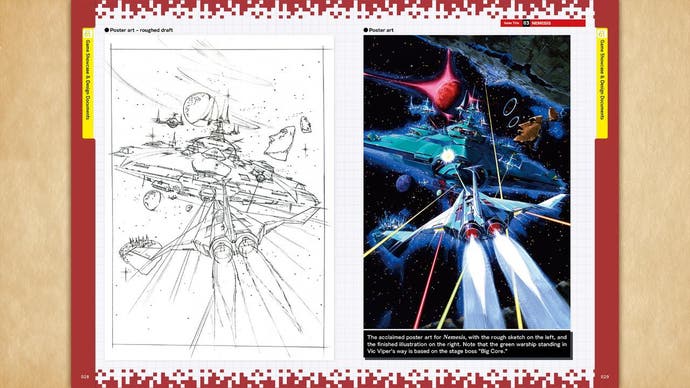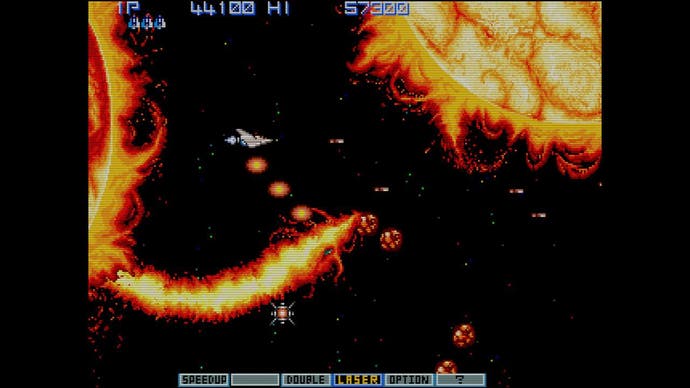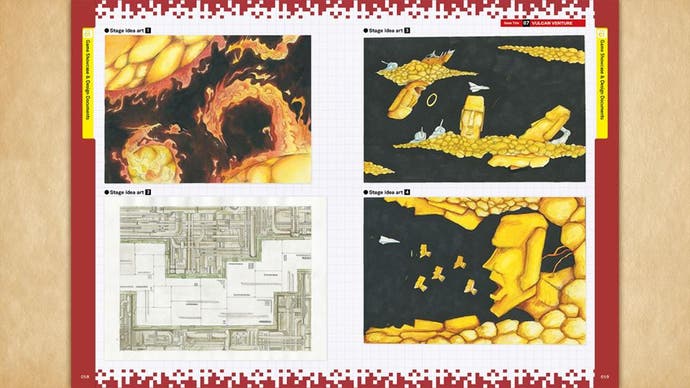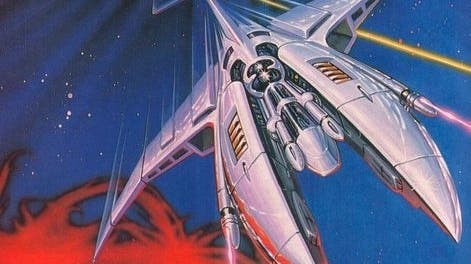Let's take a moment to #ThankKonami
The Anniversary Collection misses the mark, but it still contains greatness.
Yeah, so that isn't quite how that hashtag usually goes. You know the one I mean, I'm sure - the one that's the very first to pop up in response to anything Konami-related in recent years, as the company that built its name on superstar series such as Metal Gear, Castlevania and Silent Hill slowly - and, in some cases, messily - turned away from traditional big budget console development. It's not as if Konami's bottom line has been hurt by this all, but its reputation has perhaps been irreparably damaged.
It's a bit of a shame, because I still get that little tingle on those all-too-rare occasions its logo comes up on a splash-screen for some new console outing. If you're of a certain age and familiar with Konami's discarded 'bacon strips' logo, you'll also know that this is a company that was once responsible for out and out greatness. The 50th anniversary of Konami seems as good a time as any to celebrate that history.
And the recently-released Arcade Classics Anniversary Collection - part of a short series of games, with Castlevania and Contra compilations to follow - sets out to do just that; a selection from the company's golden era, when it churned out classic after classic as it defined so much of what was good in the 80s arcades. Were it as simple as that, though.

This is a reminder of Konami's golden age that's shot through with the apathy that's turned so many against it in more modern times. The Arcade Classics Anniversary Collection is, essentially, a bundling together of previously available Arcade Archive ports, which come courtesy of Hamster Corporation. Fine ports they are too, perfectly emulated even if they are short on any of the embellishments you see in the works of M2 or Digital Eclipse.
There are oversights aplenty here, though. Konami has introduced something akin to its own region-locking here, even at a time when that practice has become a thing of the past; each region's store has its own SKU, complete with versions of the included games specific to that particular region. Which wouldn't be a problem, until you consider the vast differences between these games from one region to another.
It's not just the names - Salamander becomes Life Force in the west, Gradius becomes Nemesis and its sequel is lumbered with slightly ugly title Vulcan Venture - but the games themselves. In some cases, they're completely different games; Thunder Cross's western version bastardises key features such as the controllable options, while Life Force departs so much from Salamander it effectively works as a sequel. Want to play both? Then you'll have to buy the Japanese and European versions of the collection.

The oversights don't stop there. Ajax, Twin Bee and Scramble were all made for vertically-oriented screens, but there's no option to play in Tate mode - a huge shame, given how the Switch is so perfectly suited to the mode, and even boasts a brilliant add-on that enables portable play that way. The game selection, too, seems spotty and thin. You've got Haunted Castle, Twin Bee and Ajax, but beyond that this may as well be just a Gradius collection - and one that can't hold a candle to the PSP Gradius Collection that provided a much more exhaustive run-through of this grandest of series.
And yet... Any opportunity to play Gradius is one worth taking, and if this collection isn't anyway near as comprehensive as the PSP one it does at least offer a unique insight into the creation and early evolution of the series. Scramble's the progenitor, a 1981 side-scroller that introduced a freedom of movement and variety that was then new to the shooter genre. It's 1985's Gradius, though - which began life and spent much of its development known as Scramble 2 - which is the real deal.
What makes it so special? I've spent years (and a fair amount of money, acquiring games, arcade boards and various other paraphernalia) pondering what's made this small run of fairly simple shooters become something of an obsession. It's about the systems, sure, slim but perfectly formed, the power-ups working something like a slot machine as you pick your way through Vic Viper's progression. It's the style, too - hard-edged sci-fi delivered with an awful lot of heart.
It's something that I stumbled upon when reading an interview with original Gradius lead Machiguchi Hiroyasu, though, that gets to the essence of it. "One of our goals for Gradius was to be able to express something that previous games hadn't been able to do," he said in the interview helpfully translated by shmuplations (and do support them on Patreon, as they're doing God's work). "That would be what we call 'sekaikan' today. I think having a unique world and setting was one of Gradius' defining points."

It's that sense of place that sells Gradius, with everything - from its systems to its style - serving it. It's what makes playing through the faraway, fantastical places such a thrill, and for all that it cribs from other places - the Moai heads were Konami's alternative to Xevious' use of the Nazca Lines in drawing upon the mysterious, while the movie Lensman, a delicious mesh of early CG and 80s anime, is drawn upon so heavily you wonder why there wasn't any litigation - Gradius feels like entirely its own thing.
The template laid down by the original was cutely inverted in the spin-off Salamander, also featured here, which gives you access to a fully powered-up ship almost from the off, and with Gradius 2 it was refined and polished to a flawless sheen. Gradius 2 is one of those rare, magical things; the perfect video game, and for me the zenith of 80s arcade games. There's a rhythm and beauty to its action that's unparalleled in the series, and moments that still inspire wonder. The third stage, for example, offering a seemingly random, impassable storm of ice rocks that invite you to dart between the gaps you create as you chip away with your tiny ship. It's delivered with a sleight of hand - those ice rocks are programmed to dance away from you - that helps make you feel like an absolute hero.
Other Gradius games would follow, of course, though this collection stops at 1988 when the series reached its peak (though Treasure's Gradius 5, which came over 15 years later and was a keen student of the second game in the series, comes extremely close to that high). It would have been lovely to have had a more complete run-down of Konami's 80s arcade era - there are countless candidates for inclusion, and how dearly I'd have loved to have seen the excellent Xexex emerge from obscurity and gain wider recognition - and there's no escaping the fact this compilation is, on the whole, a disappointment. It's a product of the new Konami, the one that doesn't seem to respect its own history, which is a shame. For what a history it was. Konami's changed so much over the years, and moved so far away from all that, sometimes I think it's better to think of it as another of the dear departed, joining the likes of Irem, Hudson Soft and Data East as long gone legends. Let's take the time, though, to remember its golden era, and give thanks for its part in creating some of the all-time greats.









